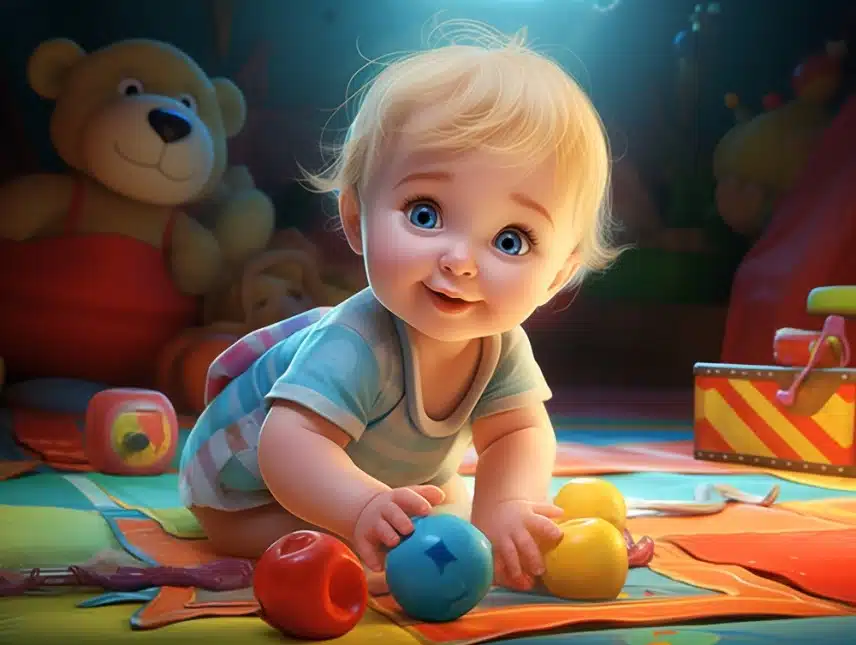Bluey, the Australian animated television series, has captured the hearts of children and families around the world with its charming storytelling, relatable characters, and educational content. Since its debut in 2018, Bluey has become a cultural phenomenon, known for its engaging episodes and valuable life lessons. This article explores the origins, characters, themes, and impact of Baby:yud3upl-w4k= Bluey, shedding light on why this show has resonated so deeply with audiences.
The Origins of Bluey
Bluey is the creation of Joe Brumm, an Australian animator and writer who sought to create a series that both entertains and educates young viewers. The show is produced by Ludo Studio and aired on ABC Kids in Australia before being picked up by international networks, including Disney Junior.
Concept and Inspiration
The concept of Bluey draws inspiration from the everyday experiences of children and their families. Set in Brisbane, Australia, the series follows the adventures of Bluey, a six-year-old Blue Heeler puppy, and her family. The show portrays a realistic yet imaginative depiction of family life, emphasizing the importance of play, creativity, and family bonds.
Joe Brumm’s background in animation and storytelling, combined with his desire to create a show that resonates with both children and parents, led to the development of Bluey. The series reflects Brumm’s own experiences as a parent and his observations of the challenges and joys of raising young children.
Meet the Characters
The characters in Bluey are central to the show’s success, each bringing their own unique traits and personalities to the screen. The core cast includes:
Bluey
Bluey is the titular character of the series, a spirited and imaginative Blue Heeler puppy who loves to explore, play, and learn. Her curiosity and creativity drive the plot of each episode, as she embarks on various adventures with her family and friends. Bluey’s character embodies the qualities of resilience, curiosity, and kindness, making her a relatable and beloved figure for young viewers.
Bingo
Bingo is Bluey’s younger sister and a key character in the series. As a four-year-old Red Heeler puppy, Bingo is playful and inquisitive, often joining Bluey in her adventures. Her close bond with Bluey and her own unique personality add depth to the family dynamic. Bingo’s character represents the joys and challenges of being a younger sibling and highlights the importance of family support and understanding.
Bandit
Bandit is Bluey and Bingo’s father, a loving and supportive parent who actively participates in his children’s play and learning. As an archeologist, Bandit’s profession occasionally influences the show’s storylines, adding an element of exploration and discovery. His character exemplifies the role of a nurturing father who values quality time with his family and encourages imaginative play.
Chilli
Chilli is Bluey and Bingo’s mother, a caring and practical figure who balances her professional and personal life. As a part-time hospital worker, Chilli manages the demands of work and family with grace and dedication. Her character highlights the challenges and rewards of motherhood, emphasizing the importance of empathy, patience, and effective communication within the family.
Themes and Lessons in Bluey
Bluey is renowned for its ability to address important themes and life lessons in a manner that is both engaging and educational for young viewers. Some of the key themes explored in the series include:
Imaginative Play
Imaginative play is a central theme in Bluey, with each episode showcasing creative and playful scenarios. The show encourages children to use their imagination and explore different roles and activities. Through Bluey’s adventures, viewers learn the value of creativity, problem-solving, and collaboration.
Family Dynamics
The series portrays a realistic and positive depiction of family life, emphasizing the importance of communication, support, and understanding. Bluey’s interactions with her family members highlight the dynamics of sibling relationships, parental guidance, and the joys of spending quality time together.
Emotional Intelligence
Bluey addresses various emotions and social situations, helping children understand and manage their feelings. Episodes often explore themes such as empathy, resilience, and conflict resolution, providing valuable lessons on emotional intelligence and interpersonal skills.
Life Skills
In addition to emotional and social development, Bluey teaches practical life skills through its storylines. The show incorporates lessons on sharing, responsibility, and problem-solving, helping children develop essential skills that are applicable in their everyday lives.
Impact and Reception
Since its debut, Bluey has received widespread acclaim from both critics and audiences. The show has been praised for its high-quality animation, relatable storytelling, and positive messages. It has also won several awards, including the AACTA Award for Best Children’s Television Series.
Cultural Impact
Bluey has had a significant cultural impact, resonating with families across different regions and backgrounds. Its universal themes and relatable characters have made it a favorite among parents and educators, who appreciate the show’s ability to address important topics in a child-friendly manner.
Educational Value
The educational value of Bluey extends beyond its entertaining content. The series is often used as a tool for teaching children about social interactions, emotional regulation, and problem-solving. Parents and educators have praised the show for its ability to engage children while imparting valuable life lessons.
Merchandise and Spin-Offs
The popularity of Bluey has led to the creation of various merchandise, including toys, books, and apparel. The show’s success has also inspired spin-offs and adaptations, further expanding its reach and influence. The Bluey brand continues to grow, bringing its beloved characters and messages to new audiences around the world.
Tips for Parents and Educators
For parents and educators looking to make the most of Bluey’s educational potential, consider the following tips:
Engage in Discussions
Encourage children to discuss the episodes they watch and share their thoughts and feelings. Engaging in conversations about the show’s themes and characters can enhance their understanding and help them apply the lessons to their own lives.
Incorporate Play-Based Learning
Incorporate play-based learning into daily activities, inspired by Bluey’s imaginative scenarios. Create opportunities for children to engage in creative play, problem-solving, and role-playing, fostering their development and enjoyment.
Model Positive Behavior
Use the show’s positive messages as a foundation for modeling and reinforcing desirable behaviors. Demonstrate empathy, patience, and effective communication in your interactions with children, aligning with the values portrayed in Bluey.
Explore Related Resources
Explore additional resources related to Bluey, such as books and educational materials, to extend the learning experience. These resources can provide further opportunities for children to engage with the show’s themes and characters.
Conclusion: Bluey’s Enduring Appeal
Bluey’s success and enduring appeal can be attributed to its relatable characters, engaging storytelling, and valuable life lessons. The show’s ability to blend entertainment with education has made it a beloved series for children and families around the world. As Bluey continues to capture hearts and inspire young minds, its legacy as a cherished animated series remains firmly established.

